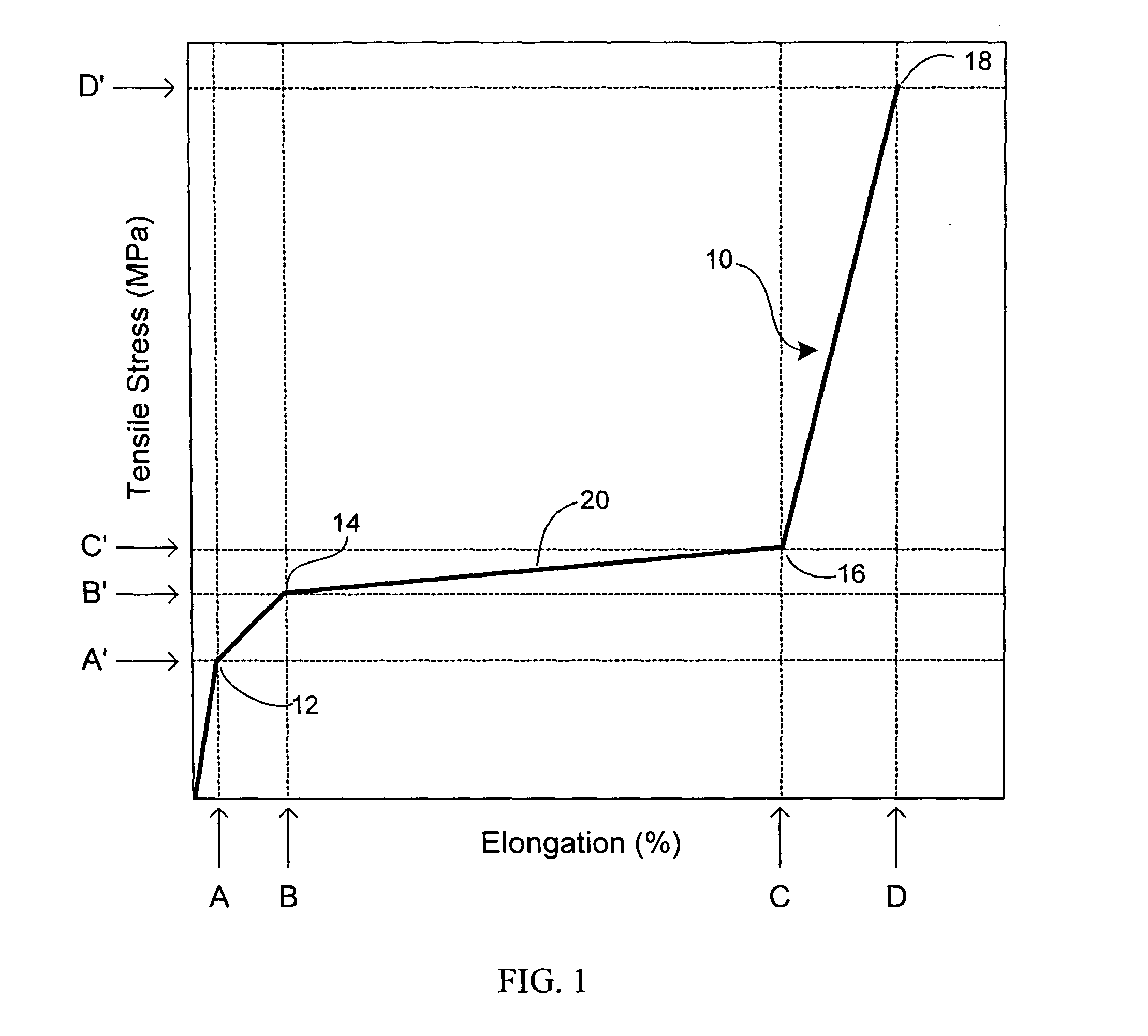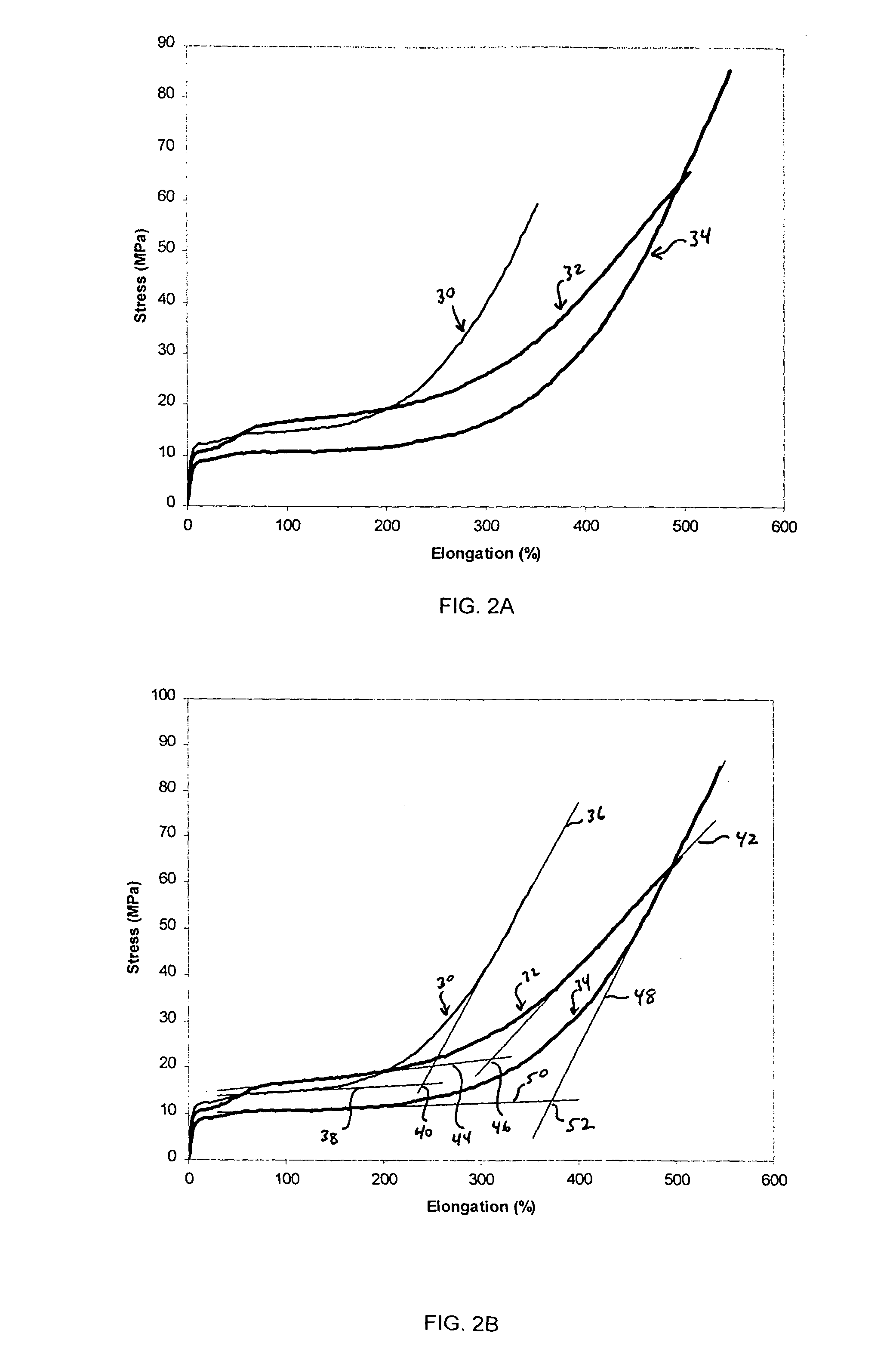Stretch film
a technology of stretch film and polyethylene, applied in the direction of rigid containers, synthetic resin layered products, packaging, etc., can solve the problems of large fluctuation in elongation, weaker and more elongated films, and known films that have not successfully displayed the combination of a large natural draw ratio
- Summary
- Abstract
- Description
- Claims
- Application Information
AI Technical Summary
Benefits of technology
Problems solved by technology
Method used
Image
Examples
examples 1-3
[0238] Examples 1A and 1B show two examples for preparing catalysts suitable for producing polyethylene copolymers according to the invention. In Examples 2A and 2B, the catalysts of Examples 1A and 1B, respectively, are used to produce two ethylene / hexene copolymer resins, denoted A and B. In Examples 3A and 3B, the properties of the polyethylene resins and unblended monolayer films of the resins are shown. These Examples are also shown in U.S. Pat. No. 6,255,426.
example 1a
[0239] A solution of 1300 mL of 30 wt % alumoxane (MAO) in toluene as determined by reference to the total Al content, which may include unhydrolyzed TMA, was charged to a two gallon (7.57 L), jacketed glass-walled reactor, equipped with a helical ribbon blender and an auger-type shaft. 2080 mL of toluene was added and stirred. A suspension of 31.5 g dimethylsilyl-bis-(tetrahydroindenyl) zirconium dichloride (Me.sub.2Si(H.sub.4Ind).sub.2ZrCl.sub.2) in 320 mL of toluene purchased from Albemarle Labs, was cannulated to the reactor. An additional bottle of dry toluene (250 mL) was used to rinse solid metallocene crystals into the reactor by cannula under nitrogen pressure. A color change from colorless to yellow / orange was noted upon addition of the metallocene to the MAO solution. The mixture was allowed to stir at 69.degree. F. (20.6.degree. C.) for one hour, before being transferred to a four-liter Erlenmeyer flask under nitrogen. Silica (1040 g, Davison MS 948, 1.65 mL / g pore volum...
example 1b
[0240] A solution of 1125 mL of 30 wt % alumoxane (MAO) in toluene as determined by reference to the total Al content, which may include unhydrolyzed TMA, was charged to a two gallon (7.57 L), jacketed glass-walled reactor, equipped with a helical ribbon blender and an auger-type shaft. 1800 mL of toluene was added and stirred. A suspension of 30.8 g dimethylsilyl-bis(tetrahydroindenyl) zirconium dichloride (Me.sub.2Si(H.sub.4Ind).sub.2ZrCl.sub.2) in 320 mL of toluene purchased from Albemarle Labs, was cannulated into the reactor. An additional 150 mL of toluene was used to rinse solid metallocene crystals into the reactor by cannula under nitrogen pressure. A color change from colorless to yellow / orange was noted upon addition of the metallocene to the MAO solution. The mixture was allowed to stir at 69.degree. F. (20.6.degree. C.) for one hour, before being transferred to a four-liter Erlenmeyer flask under nitrogen. Silica (899 g, Davison MS 948, 1.65 mL / g pore volume) was charge...
PUM
| Property | Measurement | Unit |
|---|---|---|
| Fraction | aaaaa | aaaaa |
| Fraction | aaaaa | aaaaa |
| Fraction | aaaaa | aaaaa |
Abstract
Description
Claims
Application Information
 Login to View More
Login to View More - R&D
- Intellectual Property
- Life Sciences
- Materials
- Tech Scout
- Unparalleled Data Quality
- Higher Quality Content
- 60% Fewer Hallucinations
Browse by: Latest US Patents, China's latest patents, Technical Efficacy Thesaurus, Application Domain, Technology Topic, Popular Technical Reports.
© 2025 PatSnap. All rights reserved.Legal|Privacy policy|Modern Slavery Act Transparency Statement|Sitemap|About US| Contact US: help@patsnap.com



